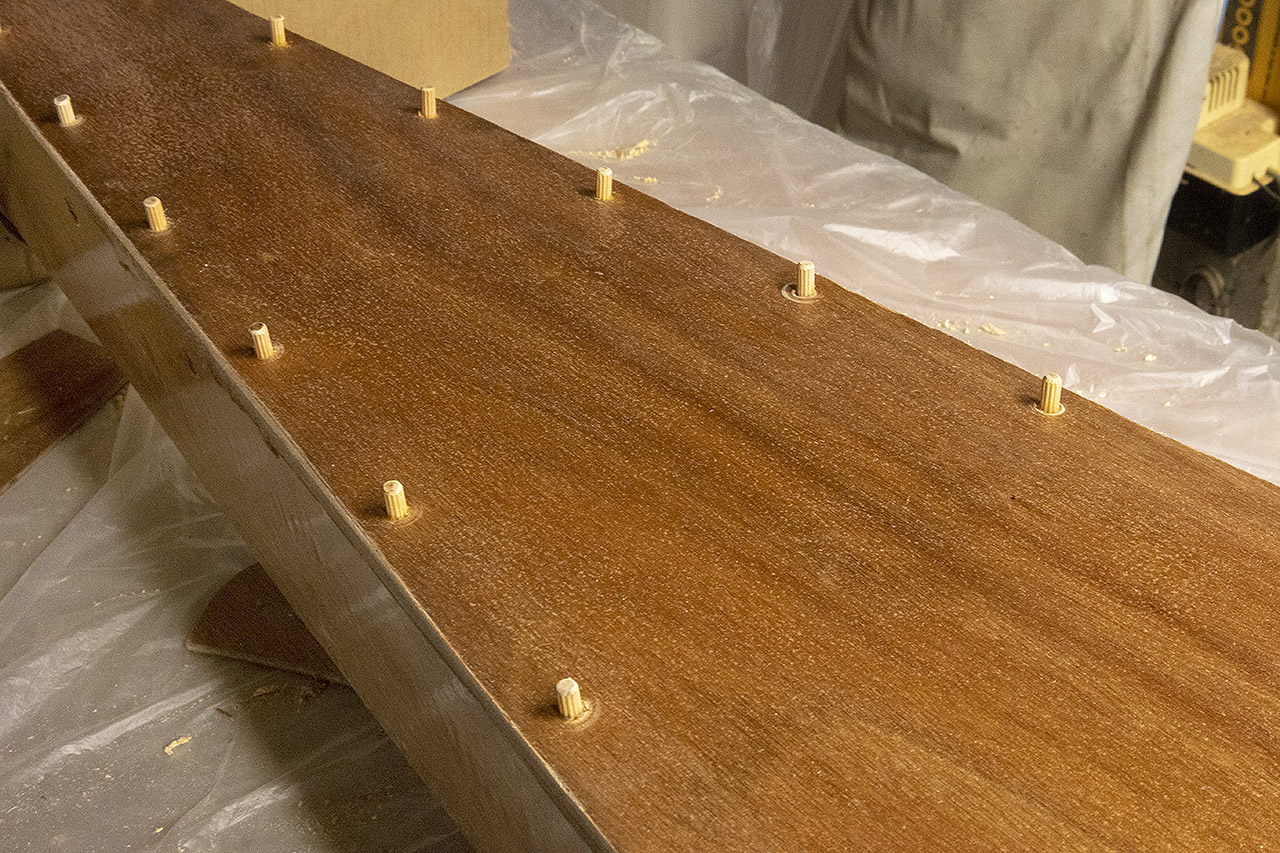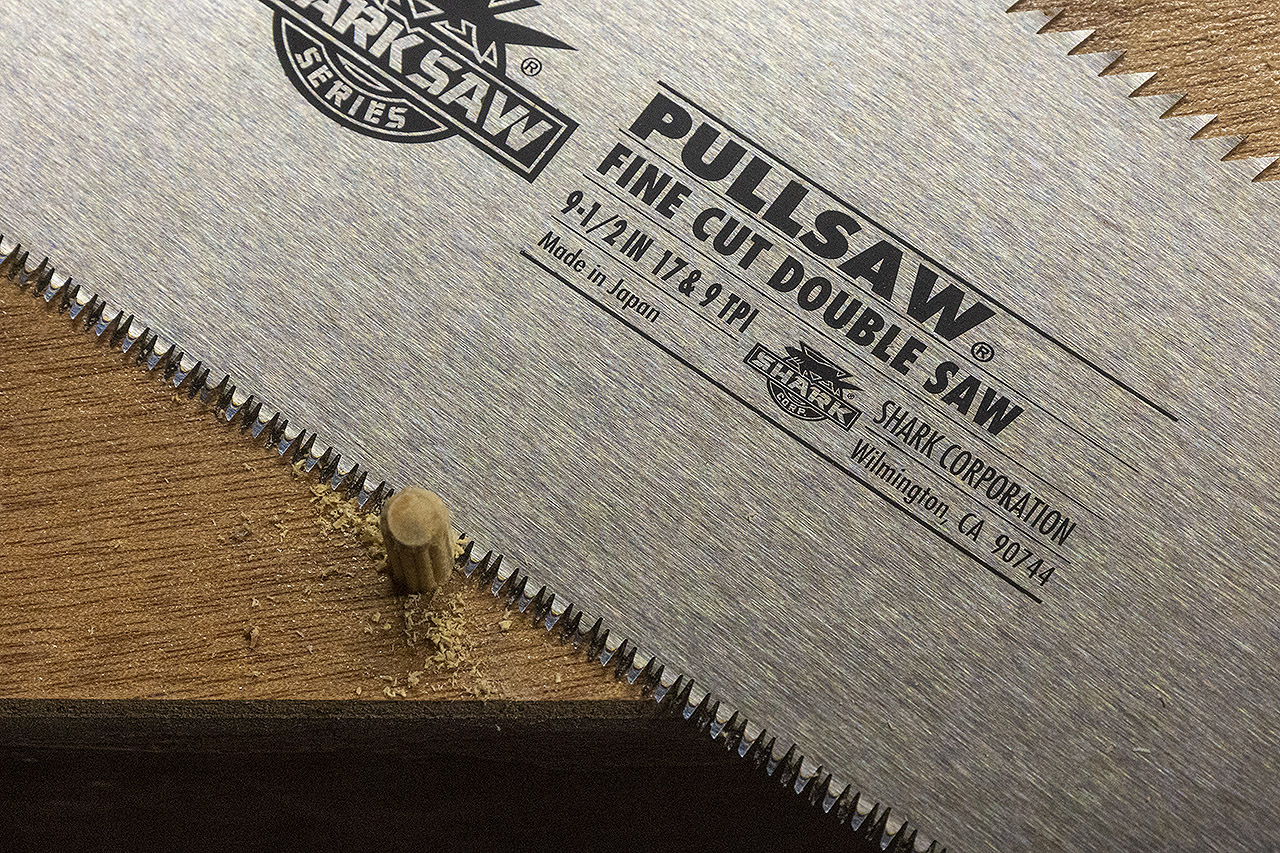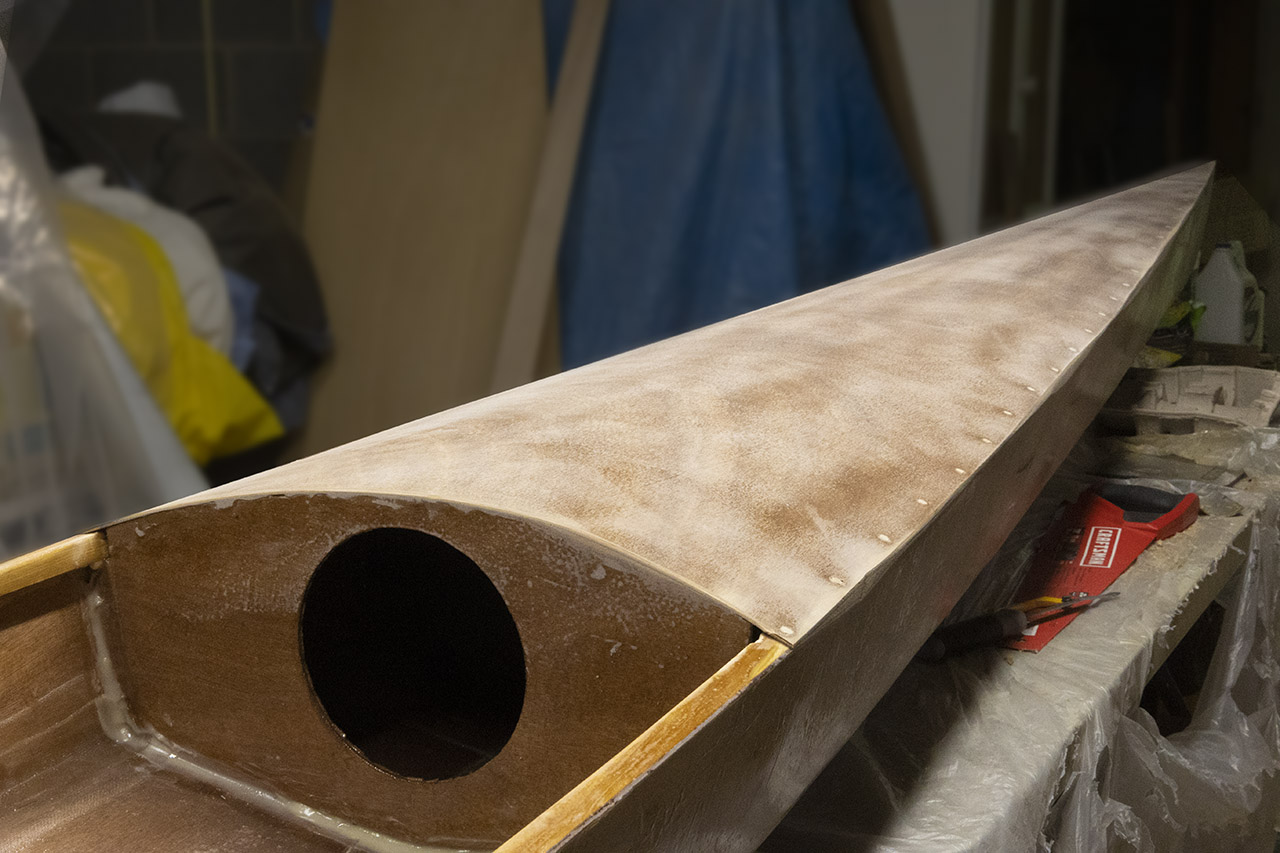Late last night, very early this morning, I did a BOTE calculation (appropriate, eh?). The forward deck takes the form of an isosceles triangle with a 2 foot base and a 9 foot height; the aft deck has a similar shape and base but a height of about 6 feet. A single layer of the varnish I’d like to use is, when wet, 70 microns deep. How much varnish do I need? (I slide-rulered the hell out it, exponential notation and all. Each layer consists of 98,000 cubic mm of varnish so the 750ml “serving size” is enough for seven coats and a night shirt.)
Today, I set quarter-inch dowels through the decks and into the sheer clamps all the way around. I buttered each with Gorilla Glue’s “ultimate wood glue.” There were a few misadventures which will go unremarked upon and which I hope will be soon forgotten.

The fine-toothed Japanese finishing saw I bought at the same I bought the kit finally got some use. It was perfect for sawing the dowels off flush or almost flush with the deck. The videos I’ve watched urged the use of razor-sharp chisels, which mine are not, in hands more experienced and more skilled than mine.

I sanded the deck edges with 80-grit to bring everything into line, made a quick pass over the dowels with the same aggressive grit, and then went over the decks to smooth the rough surface where epoxy had picked up the grain.. I redid all that again with 120-grit. The decks are ready for one more quick coat of epoxy, but I can’t do that until I stain the dowels and the stain won’t arrive until Wednesday (I had no idea I would get this far so quickly today). Some time after that, varnish.
While I was at it, I used 80 grit to take down some of the runs in the hull — that felt scary. I used 120 grit to finish off more of them. That went well and I’ll probably do more.
As for varnish, today’s favorite is Epifanes Rapidcoat RapidClear which has a slight amber tone, and a semi-gloss finish. It can be recoated in 5-6 hours without sanding (and anytime thereafter to maintain the finish, repair accidents, etc). I do not trust the Interlux spar varnish that has been sitting on my shelves these many years. Nor do I want to be committed to the days-long, slow-motion process of a severe clear coating that takes a day to cure, sanding it, and repeating with all the attendant opportunities for dust and debris. I don’t want to take a chance after 60 days’ work on bad chemistry, bad luck, or inadequate technique. (ETA: Reviews suggested that the RapidCoat is more tinted than I might hope. The heavy tint adds a dimension of error not present in clear varnish: it can produce streaks and uneven tones if inexpertly applied. Rapdiclear is on the way — a week or so out.)
The epoxy dust and matte finish left by the sanding passes is unnerving: it makes it look like the wood veneer has been destroyed. A wipe-down with mineral spirits restores some, most, or all the color temporarily, so I think all is well, but I won’t be entirely sure until I can lay down more resin. If I were certain that I had not removed the epoxy all the way down to bare wood anywhere, I could proceed to varnish, but I am not certain of that, and it’s no time to make that mistake. Be prepared: the same holy-shit-what-have-I_done! thing will happen after I scuff the new resin to begin varnishing. ScotchBrite 320 pads are enroute so I can, I hope, avoid the risk of using the orbital sander again (if not, some 220 pads for it are right there on the shelf). This is a good time to practice not panicking.

The plan, just top keep it straight in my head: stain the dowels and then apply a new coat of epoxy. Scuff that up with ScotchBrite pads (320). Then get rid of all the dust; change the plastic on the table; sweep, vacuum; put up a tent and curtains of thin plastic (think “clean room”), then mist the floor to minimize dust. Try to do the varnish in a day (8:30, 1:30, 6:30, 11:30) or overnight (10:00, 6:00, 1:00, 10:00) to reduce the chances of mayhem overcoming all precautions.
I’ve been impatient much of the day — the dowelling went so much better and faster than I expected — but it occurs to me that waiting for the stain and the next / final epoxy coat is my chance to take care of the deck at the tips and to conceal the mismatched grain and other infelicities at the bow. I can do that at any time starting tomorrow. On Wednesday, I can stain the dowels. The final epoxy can follow at any time after that.
One more thing: I might ought to consider when the splash box goes on. Probably after this last e-coat and before varnish. I need to go ahead and prep the pieces.